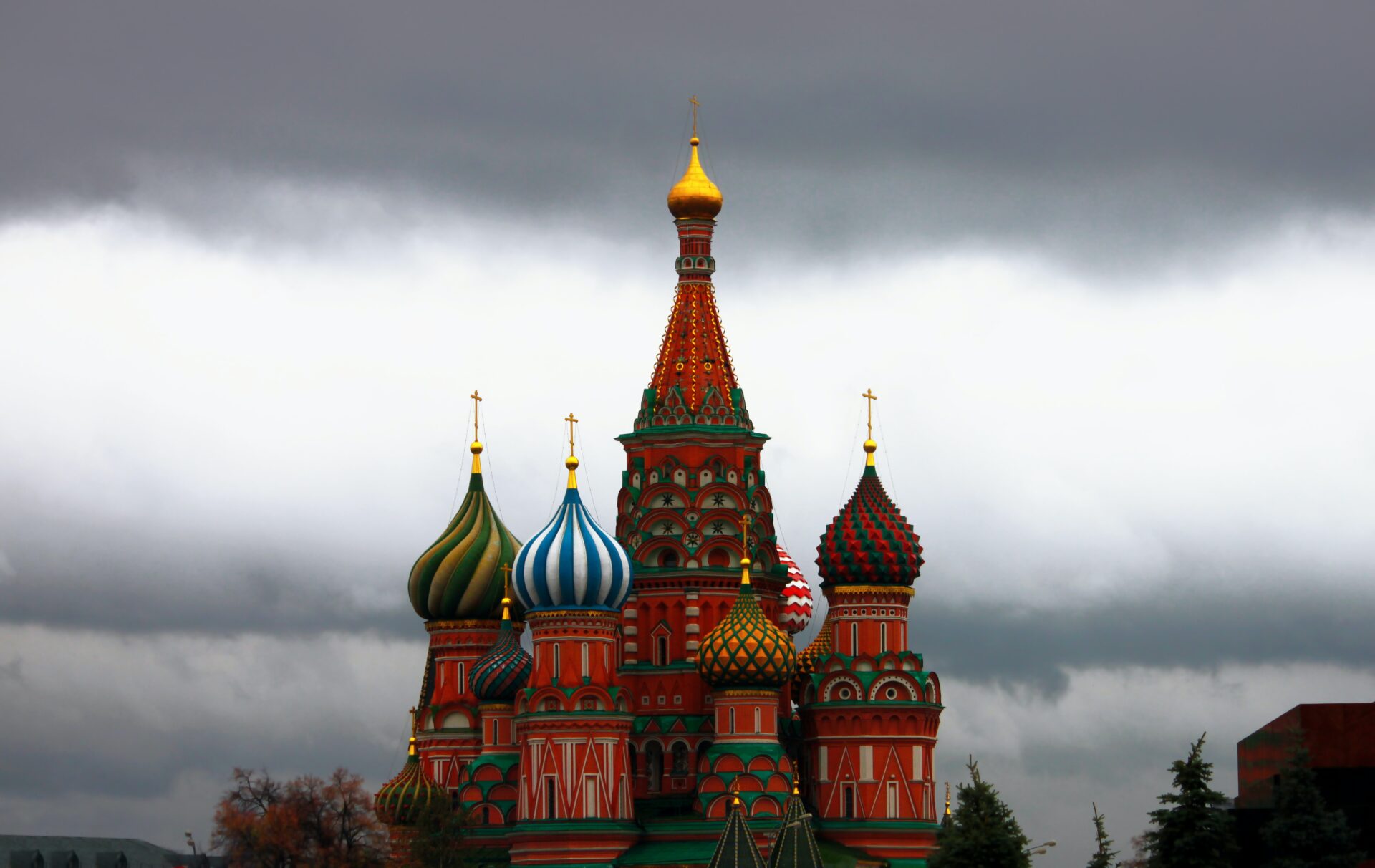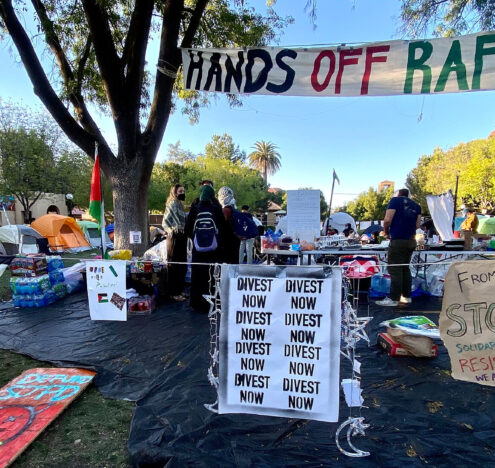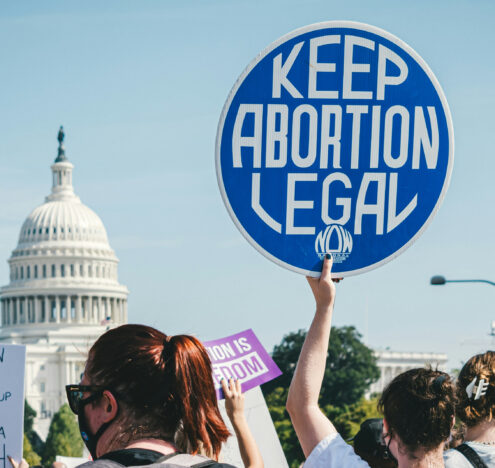“Adults in a Room” is a series in collaboration with The Stimson Center’s Reimagining US Grand Strategy program. The series stems from the group’s monthly networking events that call on analysts to gather virtually and hash out a salient topic. It aims to give you a peek into their Zoom room and a deep understanding of the issue at hand in less than the time it takes to sip your morning coffee without the jargon, acronyms, and stuffiness that often come with expertise.
The ongoing war between Russia and Ukraine has made one thing obvious: Russia is a weakening country. Yet, it is still a strong country. How should US policymakers approach a Russia that remains a weakened but powerful country? Will Russia be able to maintain ties with critical international partners or will it be increasingly isolated, posing ongoing threats to its neighbors?
The Reimagining US Grand Strategy program’s September 2023 roundtable brought experts together to discuss the possible outcomes of the Russia-Ukraine War and, more generally, possible futures for Russia and its place in the world. The conversation focused on the likelihood of Russia changing its trajectory and considered how the United States should respond. Four experts provided their insights on the plausibility of various Russia scenarios and the considerations analysts and policymakers alike must keep in mind moving forward.
Mathew Burrows, Program Lead and Distinguished Fellow, Stimson Center’s Strategic Foresight Hub
Russian President Vladimir Putin’s war of choice in Ukraine marks the final act of the post-Cold War period and the start of a new era. For those in the West who witnessed the dissolution of the Soviet Union and the founding of the present Russian Federation, there was an assumption that, like former European empires, Russia would evolve over time into a “normal” country, albeit keeping its immense territorial size spanning two continents. After numerous traumas suffered by Russians and other East Europeans, there was a general inclination to believe history had ended for Russia as it did for other countries. We all know now that that was a grand illusion.
For governments and other decision-makers dealing with Russia today, the immediate Ukraine war is understandably the all-consuming focus and not the longer-term future. A lesson to be drawn from the piecemeal settlement of the Cold War, though, is that early planning for the post-Ukraine war era is a must, especially if we want to devise a more permanent framework for European peace and security. Russia’s future is also intertwined with an increasingly fractured global order and dangerous splits between East and West as well as North and South. These divisions could be deepened by how Russia and the Euro-Atlantic community emerge from the Ukraine conflict. Russia’s domestic fortunes must also be factored in: Putin or a Putin-like regime could continue for a decade or more, but there’s also the possibility for a reset, which will impact European security.
A lesson to be drawn from the piecemeal settlement of the Cold War is that early planning for the post-Ukraine war era is a must, especially if we want to devise a more permanent framework for European peace and security.
Mathew Burrows
Developing scenarios should be an essential part of the planning process if worst cases are not overlooked or opportunities missed — and this is why Stimson Center’s Strategic Foresight Hub is designing a project in partnership with other institutions to map out the different scenarios for Russia’s future. After Joseph Stalin’s death, there was a confused reaction, with Winston Churchill keen to engage the new Malenkov government while Dwight D. Eisenhower was worried about offending right-wing opinion at home. Similarly, many scholars believe that the George W. H. Bush administration, when it came into office in 1992, was slow to work with Mikhail Gorbachev despite the rapport established by Ronald Reagan.
Rebuilding a peaceful relationship with Russia won’t be easy, but without it, we face a world less able to meet the big global challenges ahead.
Gavin Wilde, Senior Fellow, Carnegie Endowment for International Peace
Analysts have (rightly) begun envisioning a range of scenarios for Russia’s future — from the durability of the economy amid sanctions, to the prospects for so-called “decolonization” of the country itself, to Putin’s likely successors. Putin has now reached the average lifespan for Russian males, which brings our attention to this fact: Western policymakers and analysts overfocus on personalities, trust relationships, and internecine elite battles. These can conceal the ways Putin has already confined his successor — whoever he is — to Putinism, long after he’s gone.
For example, constitutional amendments in 2020 not only extended Putin’s putative reign for another 16 years but enshrined within the head of state near total control over the national security apparatus, limited any real check on his power from the judiciary or parliament, and further weakened local governments. They ruled out any international decisions — treaties, arbitrations, tribunals — deemed (by the executive, of course) “unconstitutional.” They cemented Russia’s ideological “legacy” and “historical truth.” Most notably, they explicitly prohibited Russia from ceding any territories, once claimed, including Crimea and other (partially) occupied Ukrainian regions.
Constitutional amendments in 2020 not only extended Putin’s putative reign for another 16 years but enshrined within the head of state near total control over the national security apparatus, limited any real check on his power from the judiciary or parliament, and further weakened local governments.
Gavin Wilde
Insofar as Putin is a cynical opportunist, these moves are calculated to insulate his regime. Insofar as Putin is considering his legacy — as the longest-ruling Russian leader since Stalin — these moves are designed to render his legacy irreversible. For whoever follows, Putin has steadily set a trap in which any geopolitical détente with the West will inevitably incur domestic political costs. In doing so, Putin draws lessons from history: the last Russian leader willing to bear those costs was Gorbachev. For Putin, who dubbed the ensuing Soviet collapse “the greatest geopolitical catastrophe of the century,” raising these costs to an inconceivable degree is imperative. Correcting the historical aberration of the 1990s is likely only half the legacy he aims to leave. Preventing a post-Putin collapse is the other half.
The future is, of course, unknowable, and if Russian history is any guide, unpredictability is always a safe bet. Even so, it is important for Western analysts not to delude themselves about the prospects for a post-Putin Russia. For the next Russian leader, Putin isn’t merely the elephant in the room — Putin is the room.
Nvard Chalikyan, Nonresident Fellow, Stimson Center’s Russia Program
The discussion on Russia’s future ranged from a scenario of a stalemate where Russia maintains its territorial gains to Russia’s slow decline as a regional power and the possible collapse of the Russian state. In any of these scenarios, Russia will likely be more dependent on China, as Western sanctions would almost certainly persist. At the same time, the bilateral relationship will be affected by the outcome of the Ukraine war and how Russia will emerge from it.
In a scenario when Russia more or less achieves its goals in Ukraine, the current trends of the Russia-China “no limits” strategic partnership will deepen. Russia and China will also continue to cooperate in the framework of non-Western institutions such as the BRICS, through which they aim to reshape the international system, reduce the dominance of the US dollar, and decouple global supply chains from the West. The Shanghai Cooperation Organization composed of Russia and the members of China’s Belt and Road Initiative will also compete with US-led coalitions in the future. At the same time, Russia and China will continue their attempts to win the support of the Global South as a counterweight to US hegemony. Should the prospects of China-US confrontation over Taiwan increase, this may also compel China to deepen its military cooperation with Russia.
While China does have far-reaching economic ambitions in Russia’s neighborhood, it has neither the capacity nor ambition to replace Russia as a security guarantor or ensure peace and stability in the post-Soviet space.
Nvard Chalikyan
In the scenario when Russia declines as a regional power or collapses as a state, the resulting power vacuum is likely to be filled by China (also by Turkey and, to a lesser extent, the European Union). Taking advantage of Russia’s decline, China will take over some areas of Russian influence. This process has been slowly underway in Central Asia, where China has been making military and economic investments. Despite Moscow’s economic and security dominance, some Central Asian states, among them Russia’s close ally Kazakhstan, are already building connectivity projects with China and Europe bypassing Russia. Further weakening of Russia’s influence will result in the acceleration of this trend.
While China does have far-reaching economic ambitions in Russia’s neighborhood, it has neither the capacity nor ambition to replace Russia as a security guarantor or ensure peace and stability in the post-Soviet space. Furthermore, should Russia decline, this is likely to entail major security risks, which can potentially destabilize Eurasia. Even though Russia’s decline will open new opportunities for the West (both the EU and United States), it will pose both regional and global stability risks and may create opportunities for China to expand where Russia retracts, adding to US-China power competition struggle. On the other hand, this may also compel China to increase its support to Russia to prevent its collapse and the adverse consequences China may incur as a result of that.
Anatol Lieven, Program Director, Quincy Institute for Responsible Statecraft’s Eurasia Program
This year’s Ukrainian offensive has clearly failed, with minimal gains and enormous losses. The Biden administration is now seeking another $61 billion in military aid to Ukraine. While this can help Ukraine to block future Russian offensives, it is very unlikely to help Ukraine recover the territory it has lost. Nor, of course, can Biden guarantee that this aid will be forthcoming in the long term. And Russia seems prepared to go on fighting indefinitely if the only choice being offered by Kyiv and Washington is complete surrender. By encouraging the Ukrainian army to exhaust itself in repeated failed and costly offensives, US aid could even lead to Ukrainian defeat. It is, therefore, time to accompany aid to Ukraine with a serious diplomatic effort aimed at a ceasefire.
The reasons why time is not on Ukraine’s side are twofold. The first is developments in military technology that — as in World War I — strongly favor the defensive. “Surprise is the essence of attack” is an old military maxim, but satellite technology has largely eliminated the possibility of large-scale surprise offensives by identifying the necessary concentrations of forces. Since 1939, the two great weapons of the offensive have been tanks and ground-attack aircraft, but drones and anti-tank missiles have proved deadly to armor, as have hand-held anti-aircraft missiles to low-flying aircraft and helicopters. Also critical has been a much older weapon, the landmine. Ukrainian veterans of the battle for Bakhmut with whom I spoke last spring talked of a battlefield choked with mines, that slowed down all attacks and counter-attacks — and their missing legs provided tragic evidence of this.
The Biden administration should reach out privately to leading “non-aligned” countries (for example, of the BRICS grouping), telling them that Washington respects their opinions and needs their help in negotiating a ceasefire in Ukraine.
Anatol Lieven
Last year, these factors helped stop the Russian invasion of Ukraine far short of its objectives. This year, they have stopped the Ukrainian counter-offensive. Russia has had ample time to construct multiple defensive lines, and it is hard to see why future Ukrainian attacks will have greater success.
The other factor is perhaps the oldest in war: sheer numbers. A striking feature of this war has been the joint importance of ultra-modern weaponry and masses of infantry, whether volunteer or conscript. Last year, another critical factor in Ukraine’s success was that the Putin regime deployed far too few troops for its invasion and then delayed for months before introducing conscription, whereas Ukraine benefited from the start from tens of thousands of highly-motivated volunteers and from mass conscription. The Ukraine army’s victory in Kharkiv province last autumn was partly due to the fact that it was able to outnumber the Russians.
This advantage has now disappeared. Many of Ukraine’s best troops are dead or disabled, with the United States estimating at least 70,000 Ukraine troops having been killed in the conflict and more than 100,000 injured. Russia has introduced conscription, and the Russian population (after so many Ukrainians have fled to the West) is around four times that of Ukraine. The United States can manufacture weapons for Ukraine. It cannot manufacture the soldiers to use them.
When it comes to talks, the Ukrainian government has trapped itself by its repeated statements (even entered into law) that rule out even a temporary, de facto territorial compromise as part of a ceasefire agreement. The Biden administration, too, has talked itself into a corner by repeatedly stating both that any agreement is purely a matter for the Ukrainians and that Russia must withdraw from all the territory that it has occupied since 2014, including Crimea.
As far as negotiations are concerned, this is a non-starter. No Russian government will abandon Crimea and the naval base of Sevastopol (viewed by Russians as the equivalent of Hawaii and Pearl Harbor), and as long as Ukraine and the United States continue to demand this, Russia will also try to hold on to all the additional land that it has taken.
The Biden administration has, therefore, made it almost impossible for itself to initiate negotiations for a ceasefire. There is, however, a diplomatic strategy that would help Washington out of this trap while also meeting another key goal of US diplomacy.
As part of its strategic rivalry with China, the administration is trying to reach out to the Global South. Unfortunately, concerning both the Ukrainian and Israeli-Palestinian conflicts, this strategy has been accompanied by open US contempt for the actual interests and opinions of these countries in ways that have caused great anger even in important US partners like India.
The Biden administration should reach out privately to leading “non-aligned” countries (for example, of the BRICS grouping), telling them that Washington respects their opinions and needs their help in negotiating a ceasefire in Ukraine. They should be assured that if they issue a strong joint call for a ceasefire (with security guarantees including a UN monitoring and peacekeeping force), Washington will accept it — if only with a public pretense of unwillingness — and urge it on the Ukrainians.
In opposition to this, it will doubtless be urged that America’s existing public stance makes such a move too humiliating, but that is indeed why the United States needs more traditional diplomats and fewer loudmouth propagandists. And while such a strategy would involve a degree of embarrassment, it would be much less embarrassing and much less dangerous than an eventual Russian victory, which is where existing US strategy may well be heading.





















